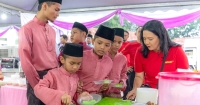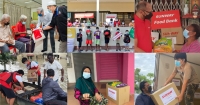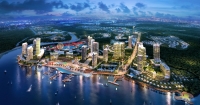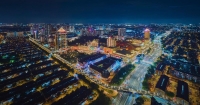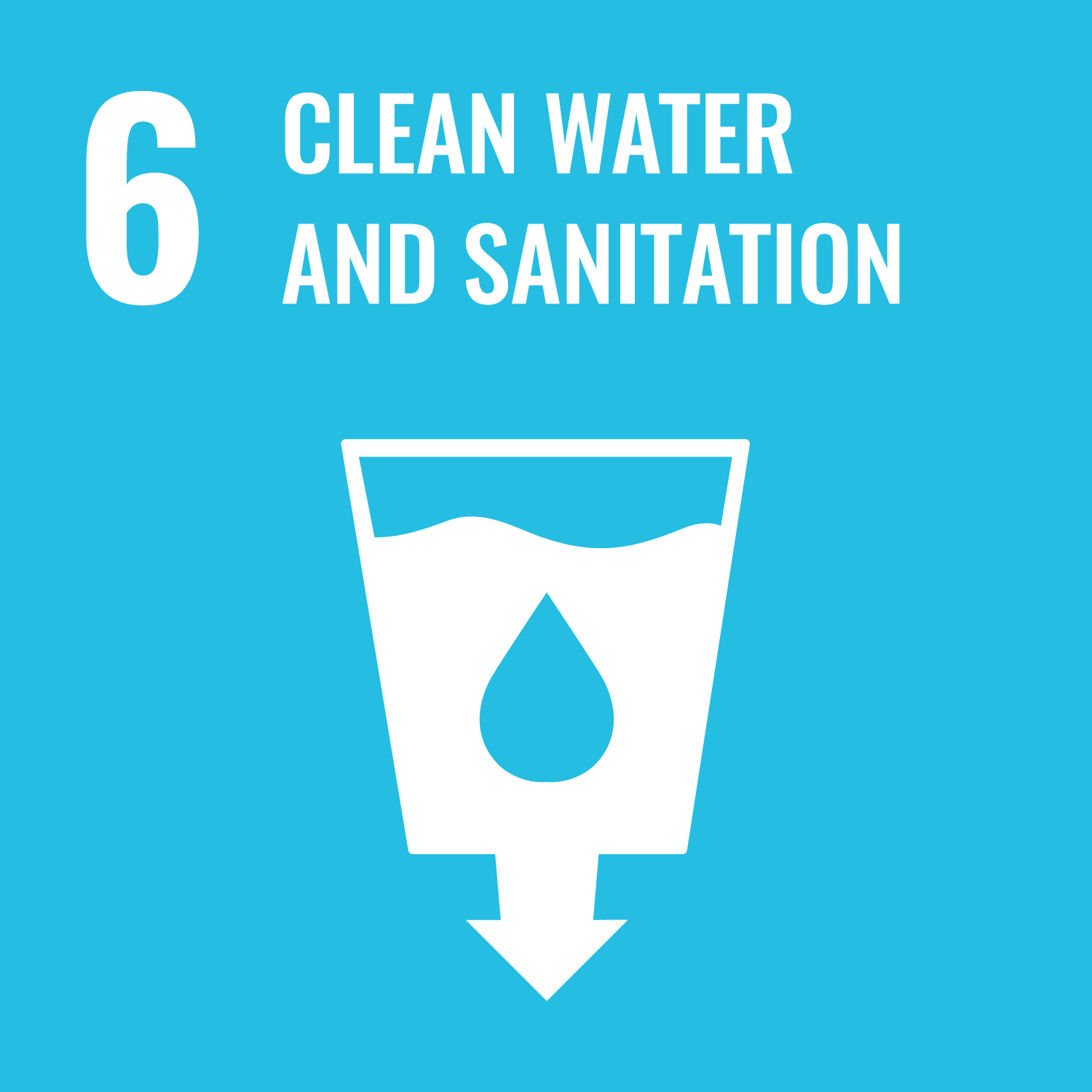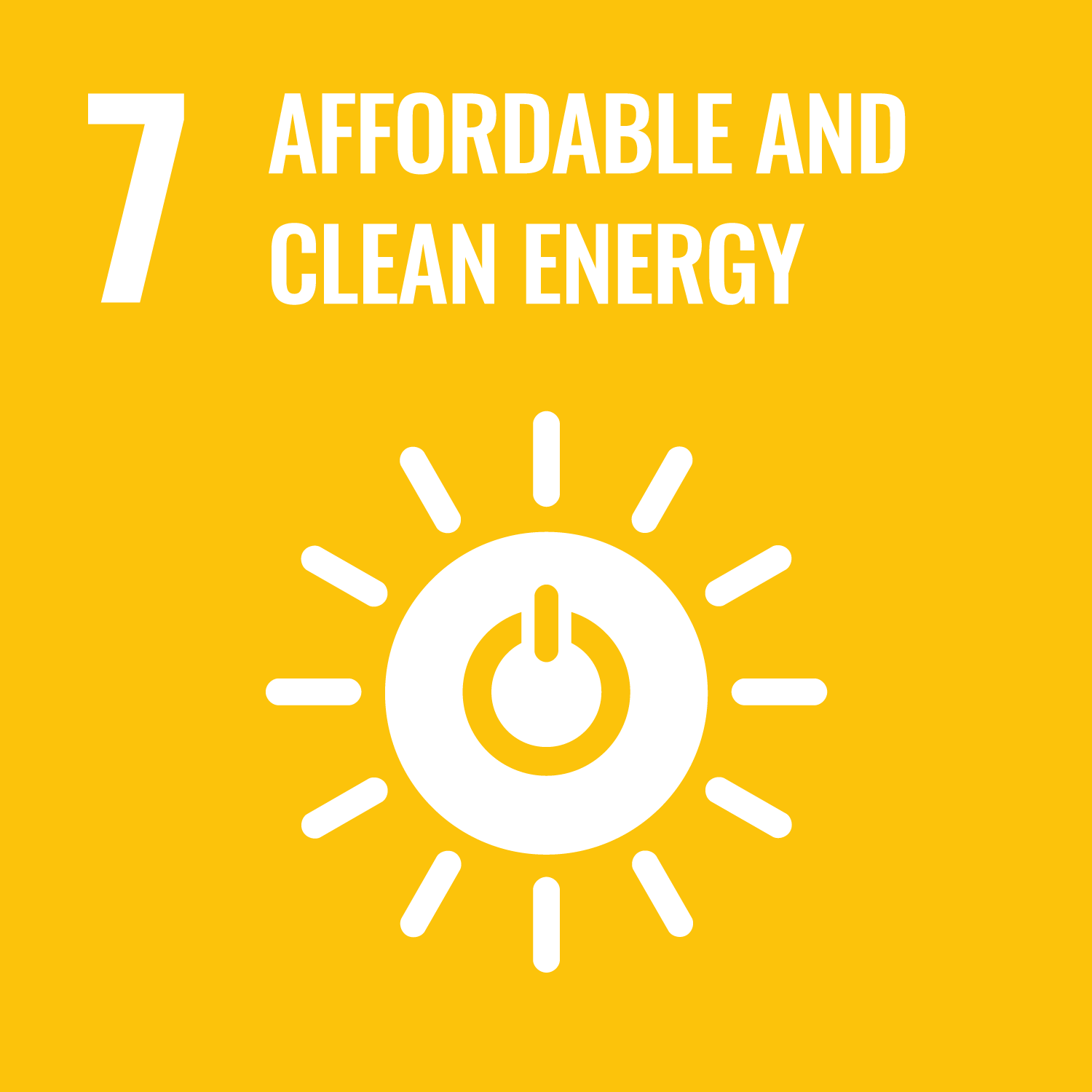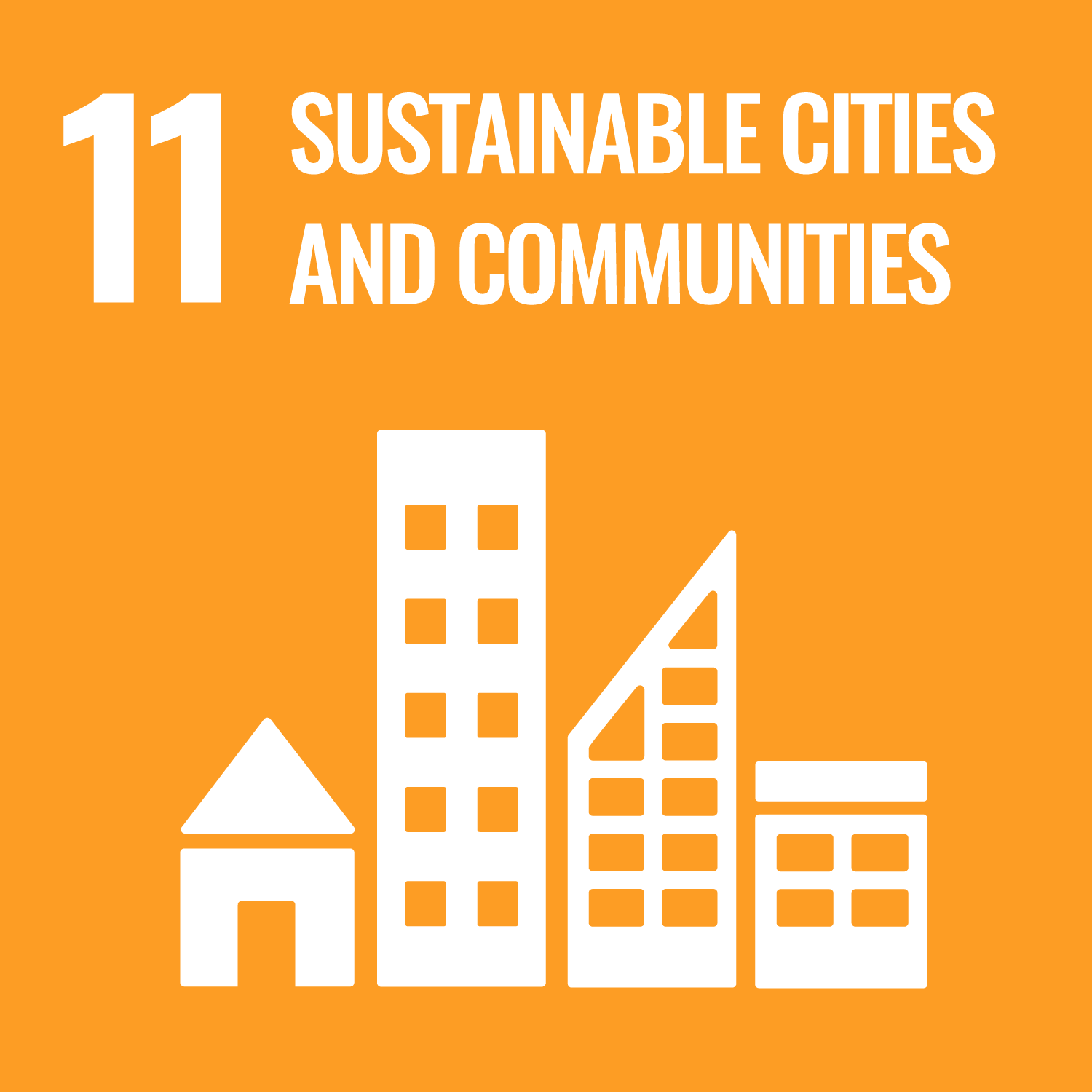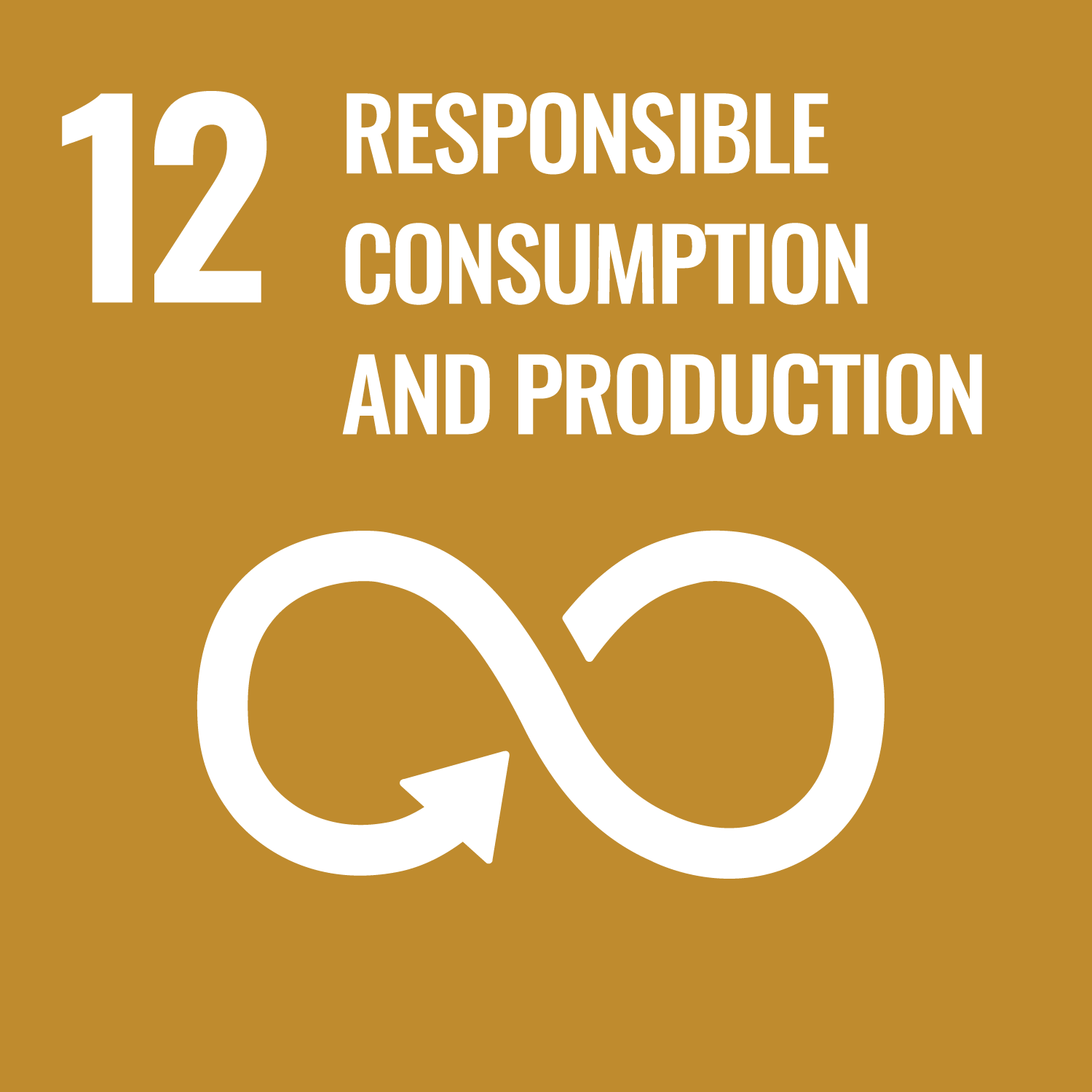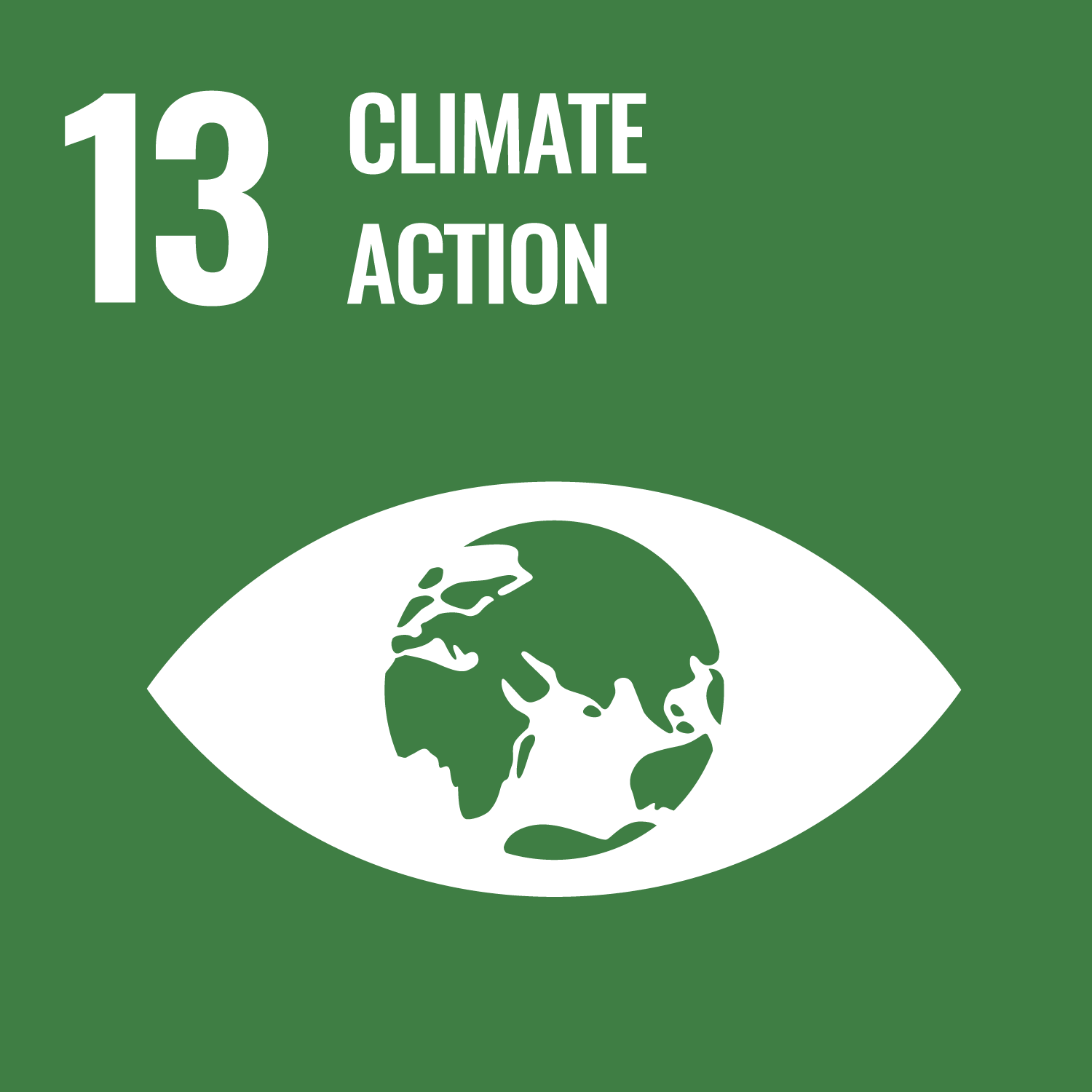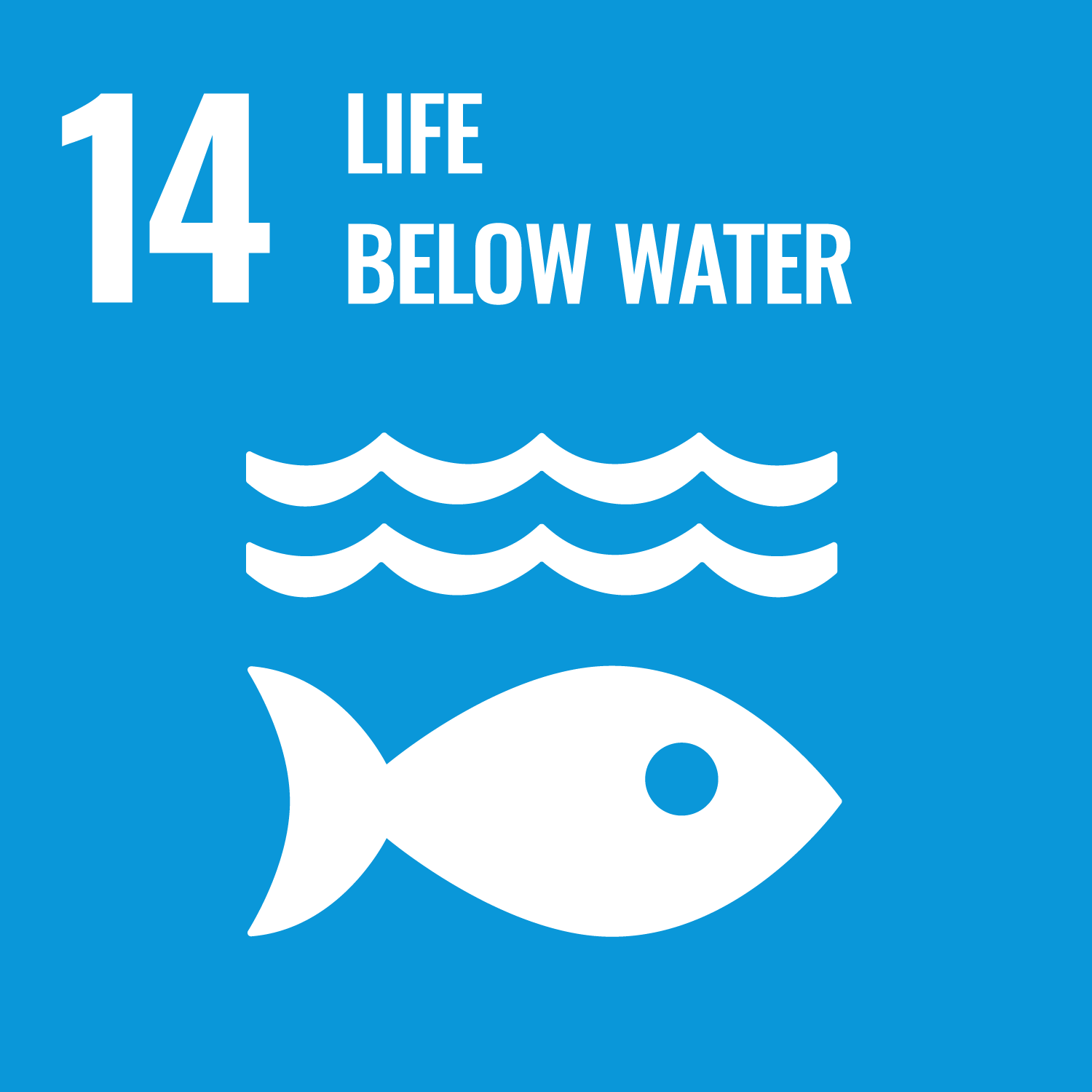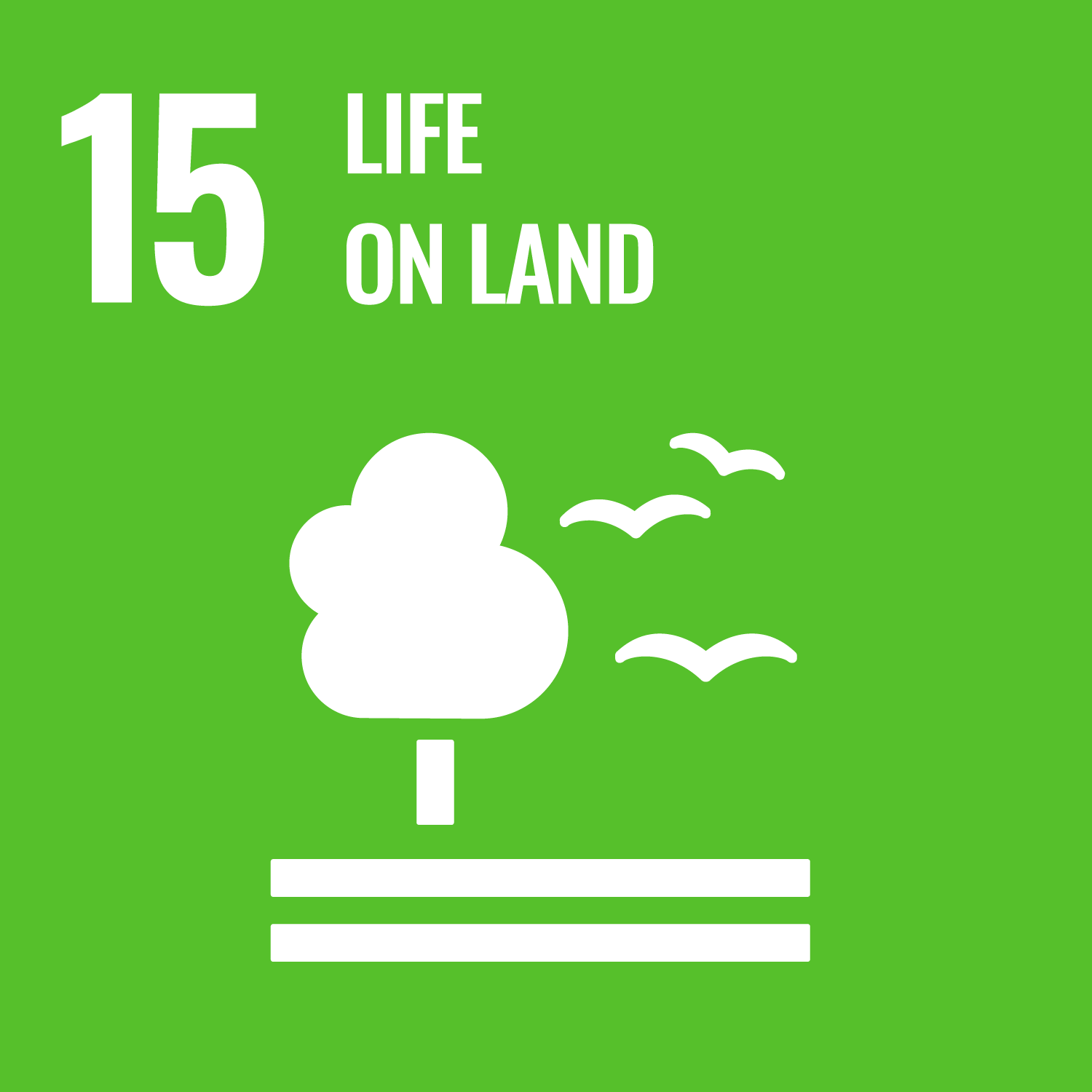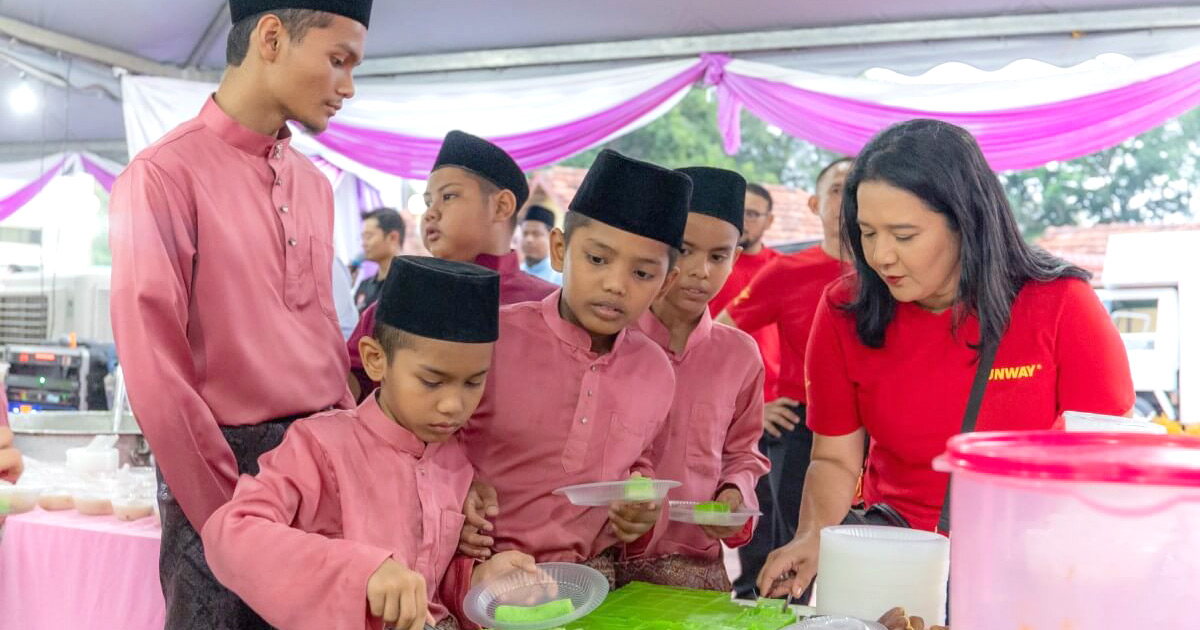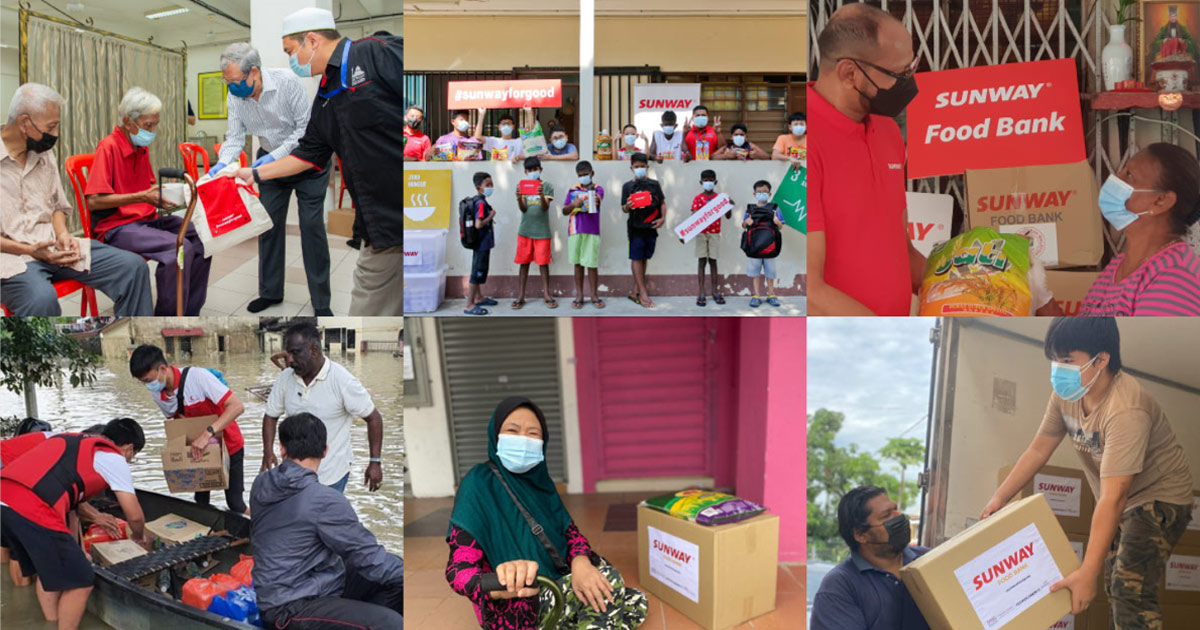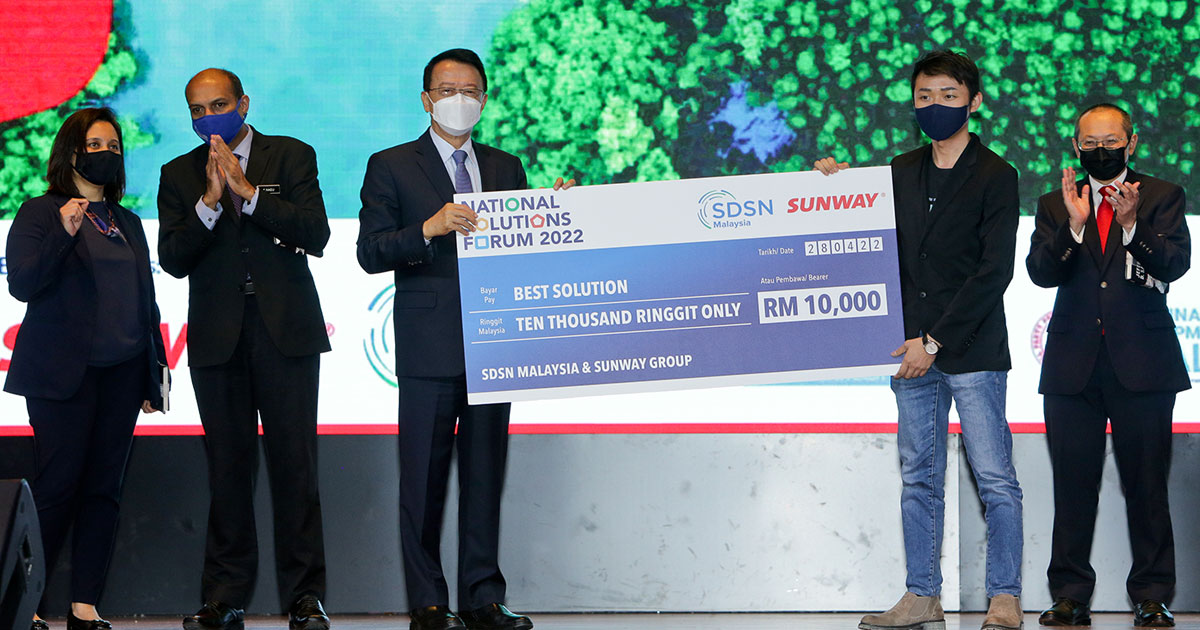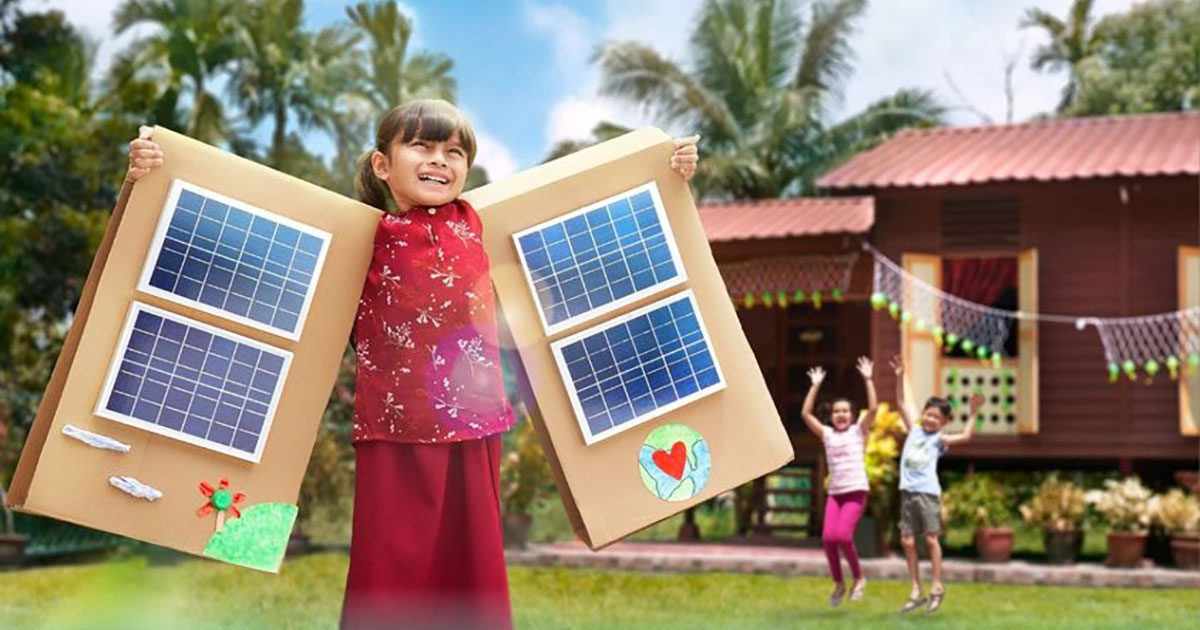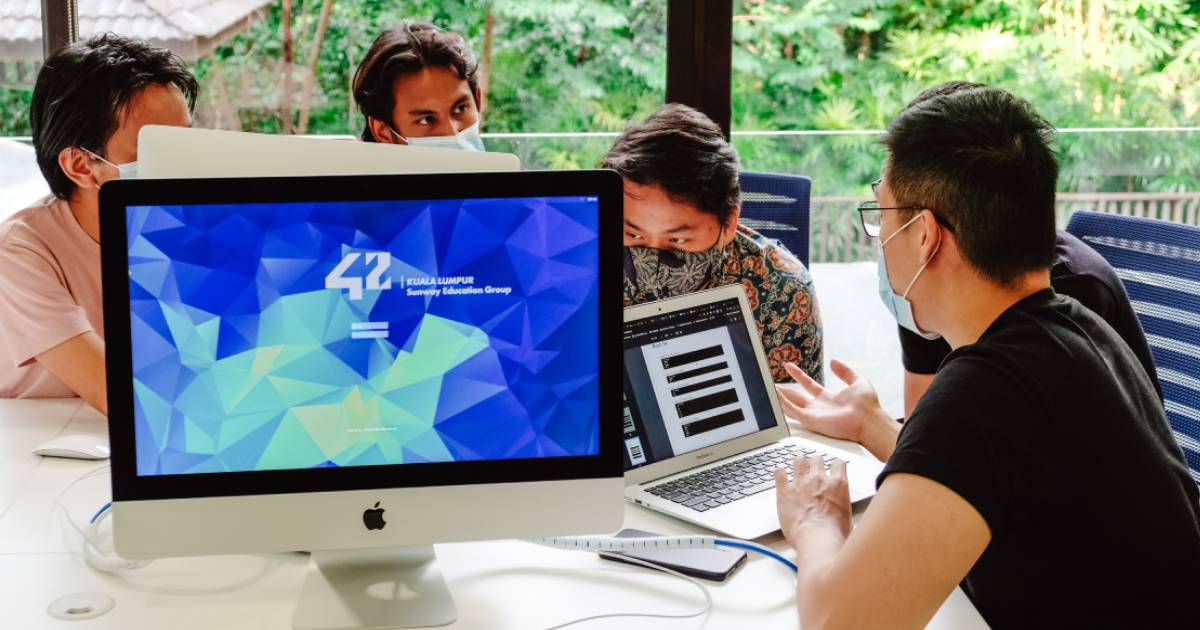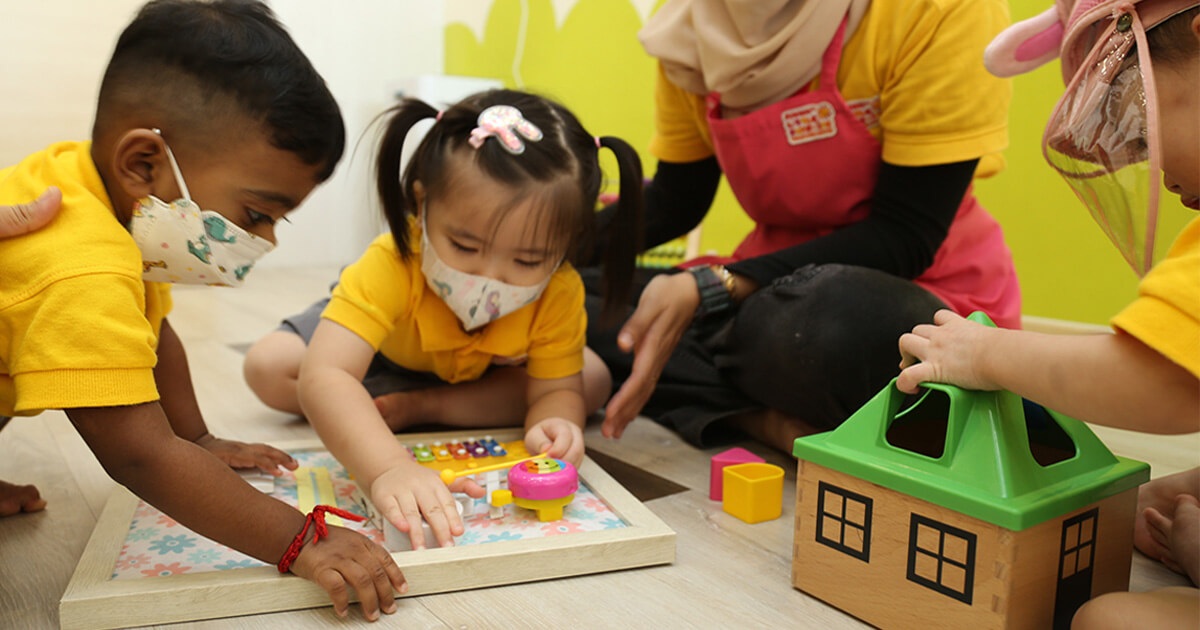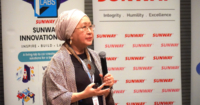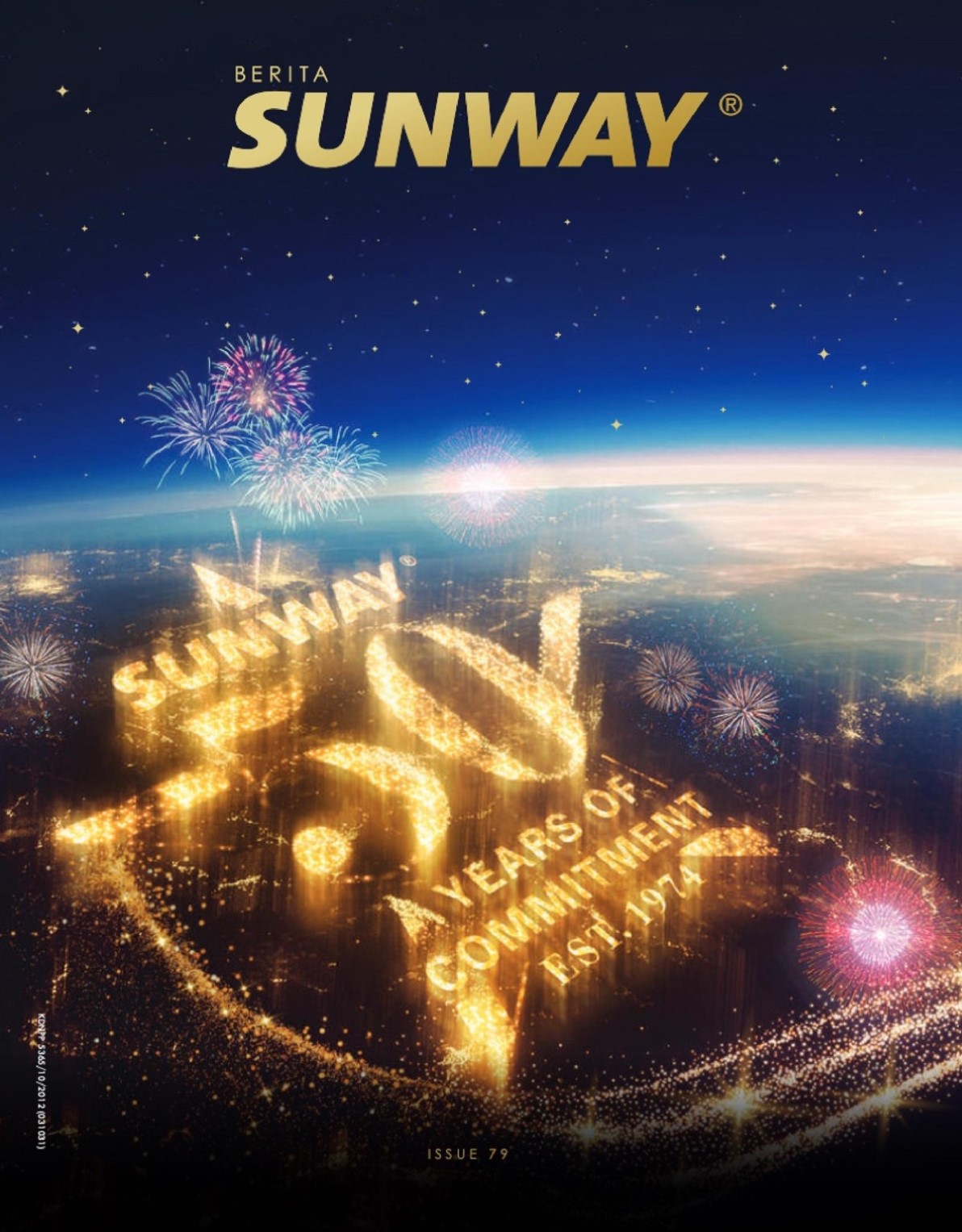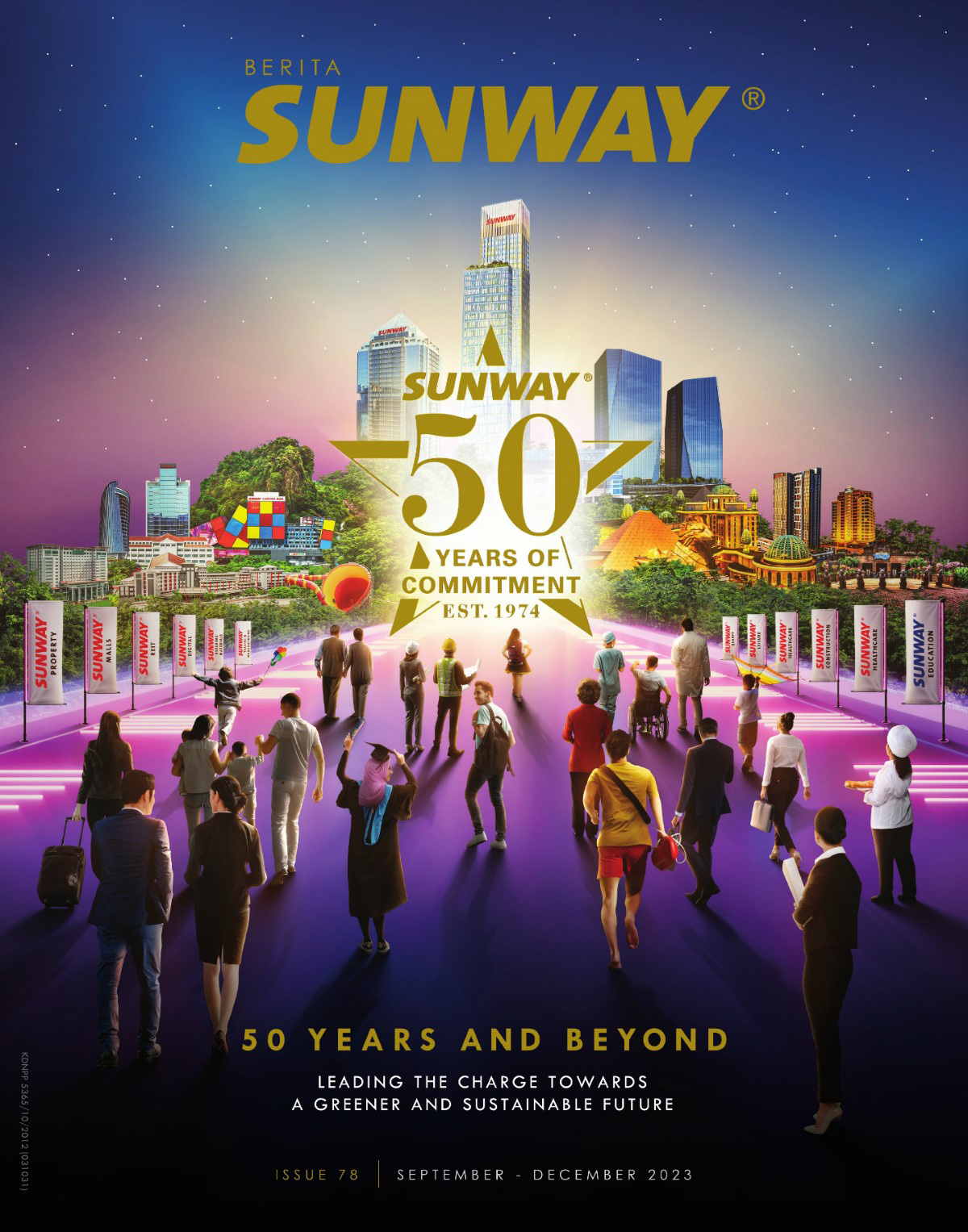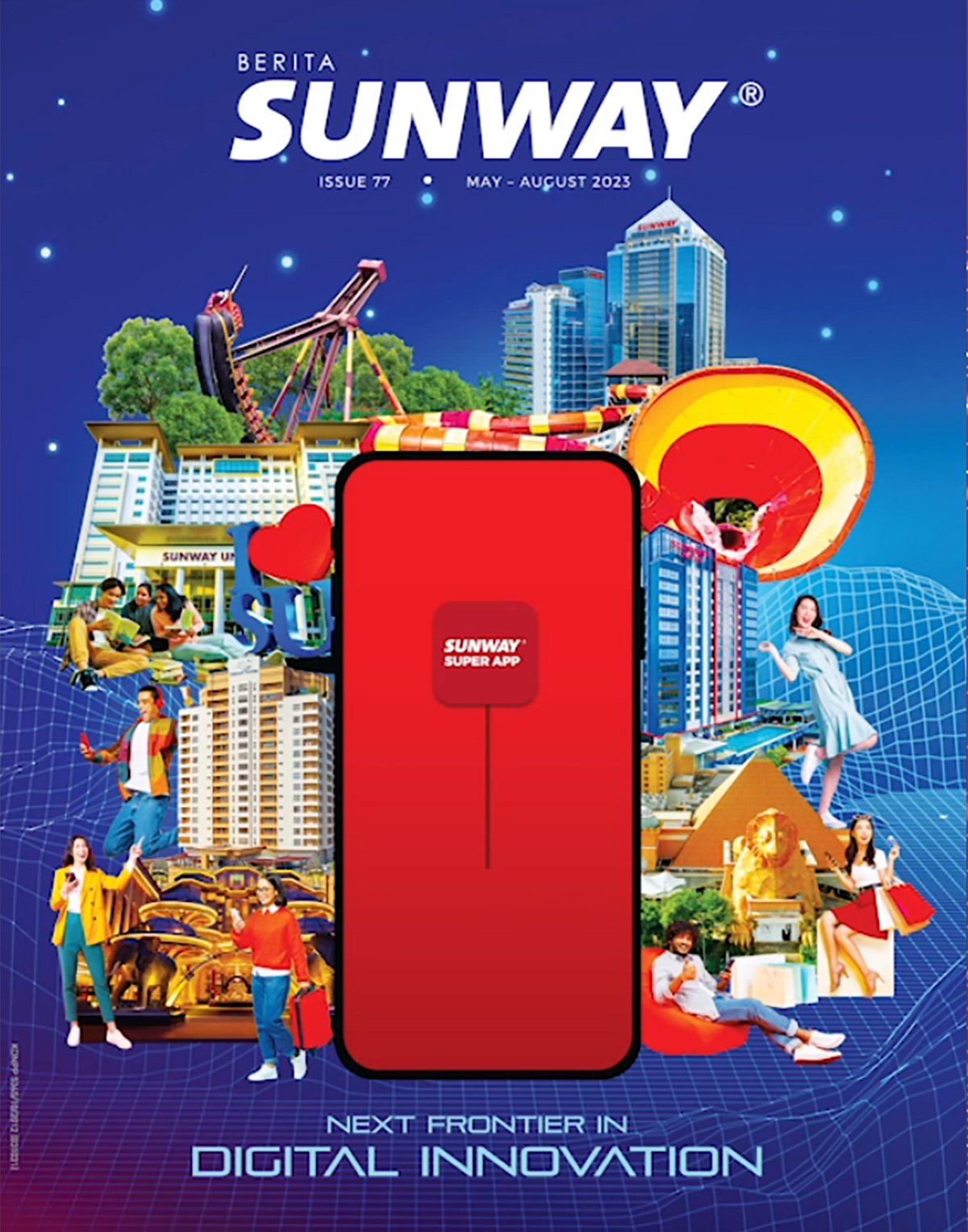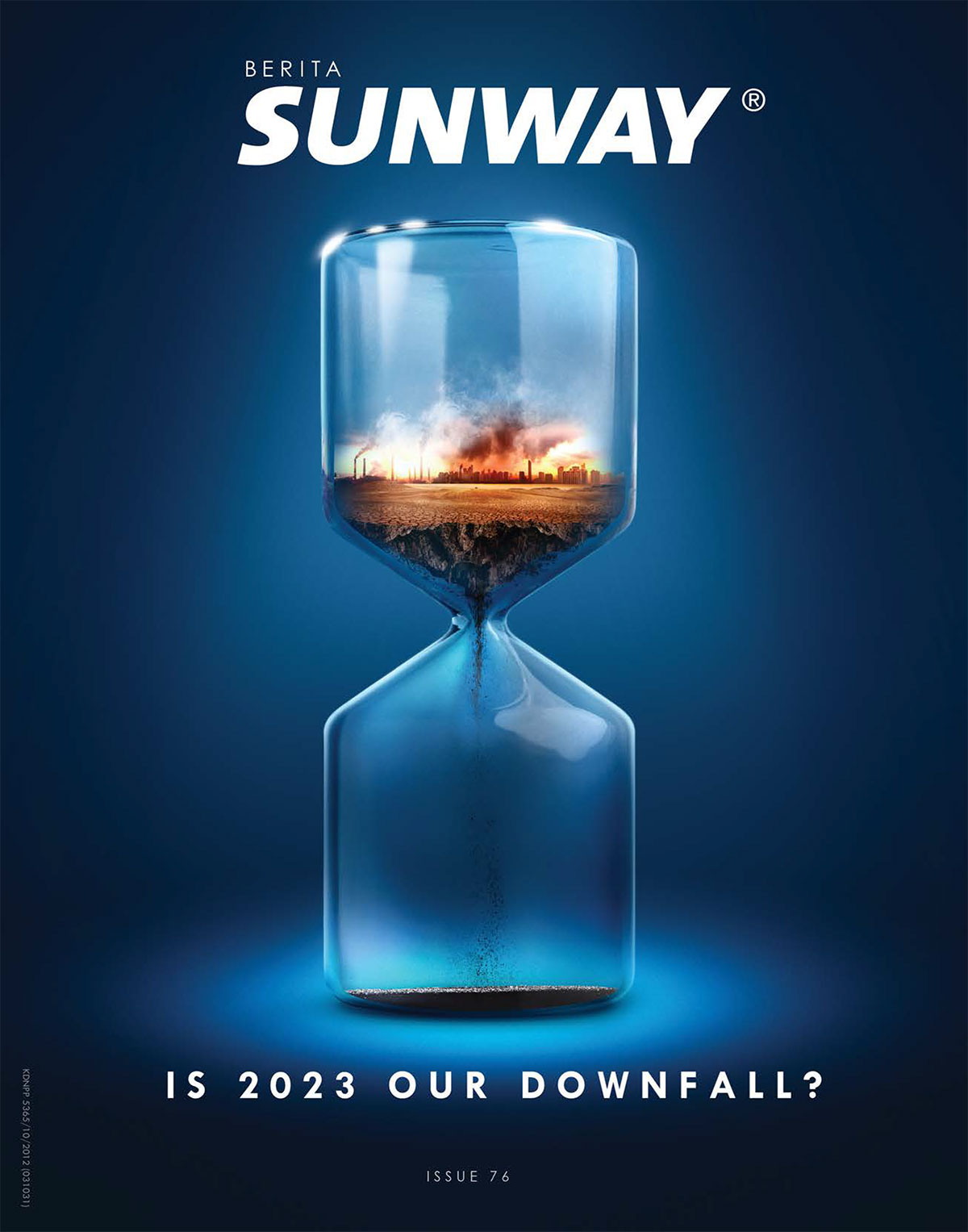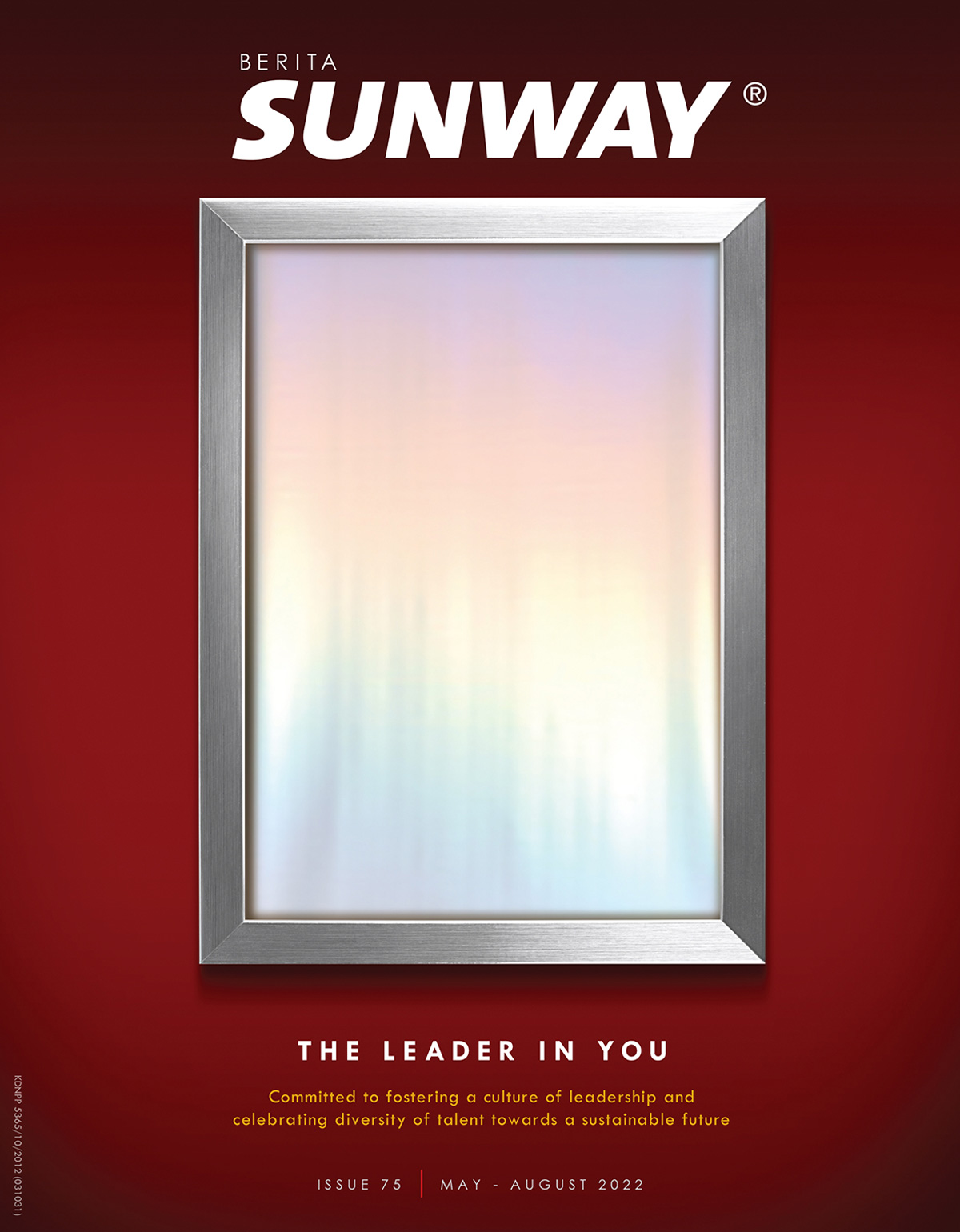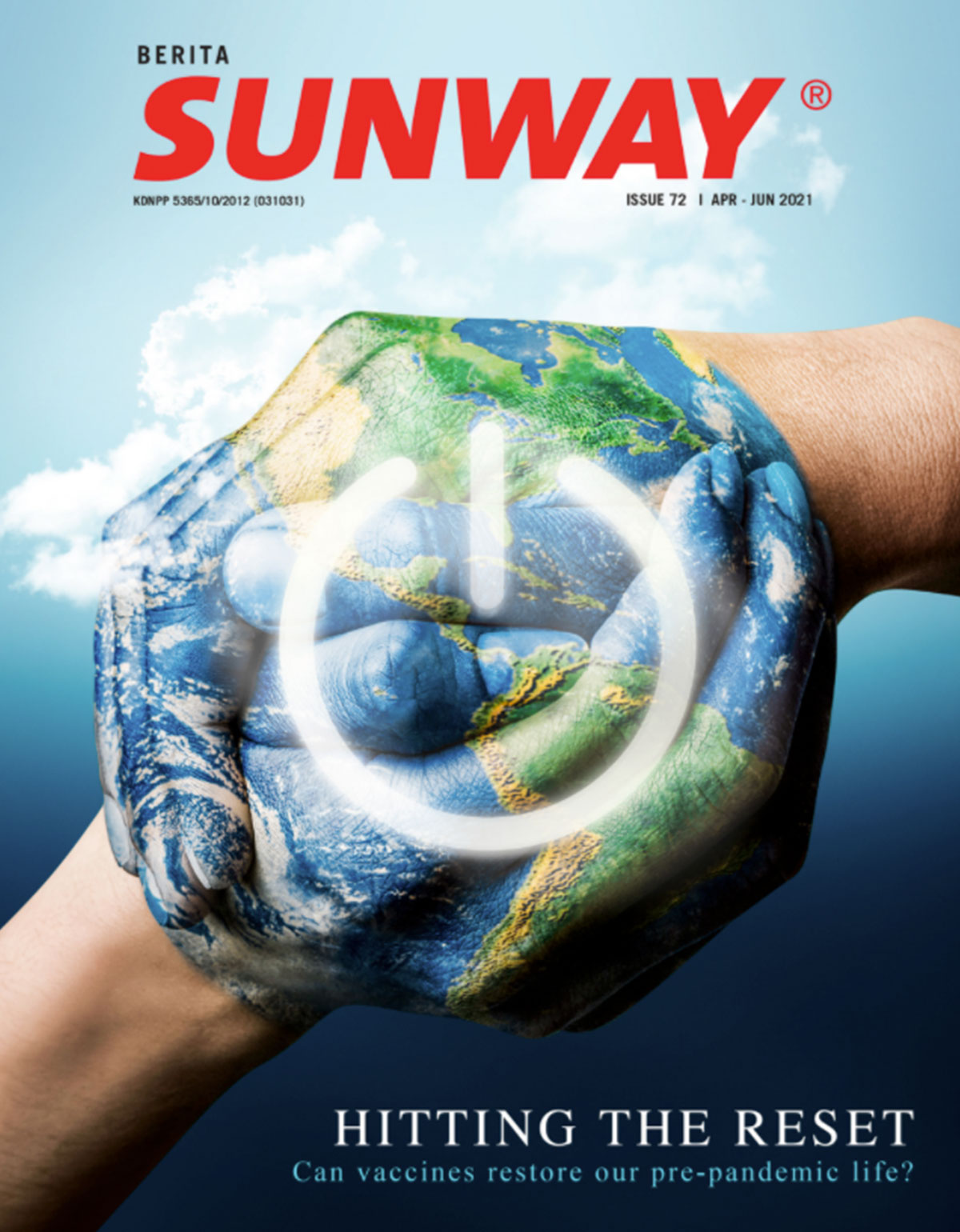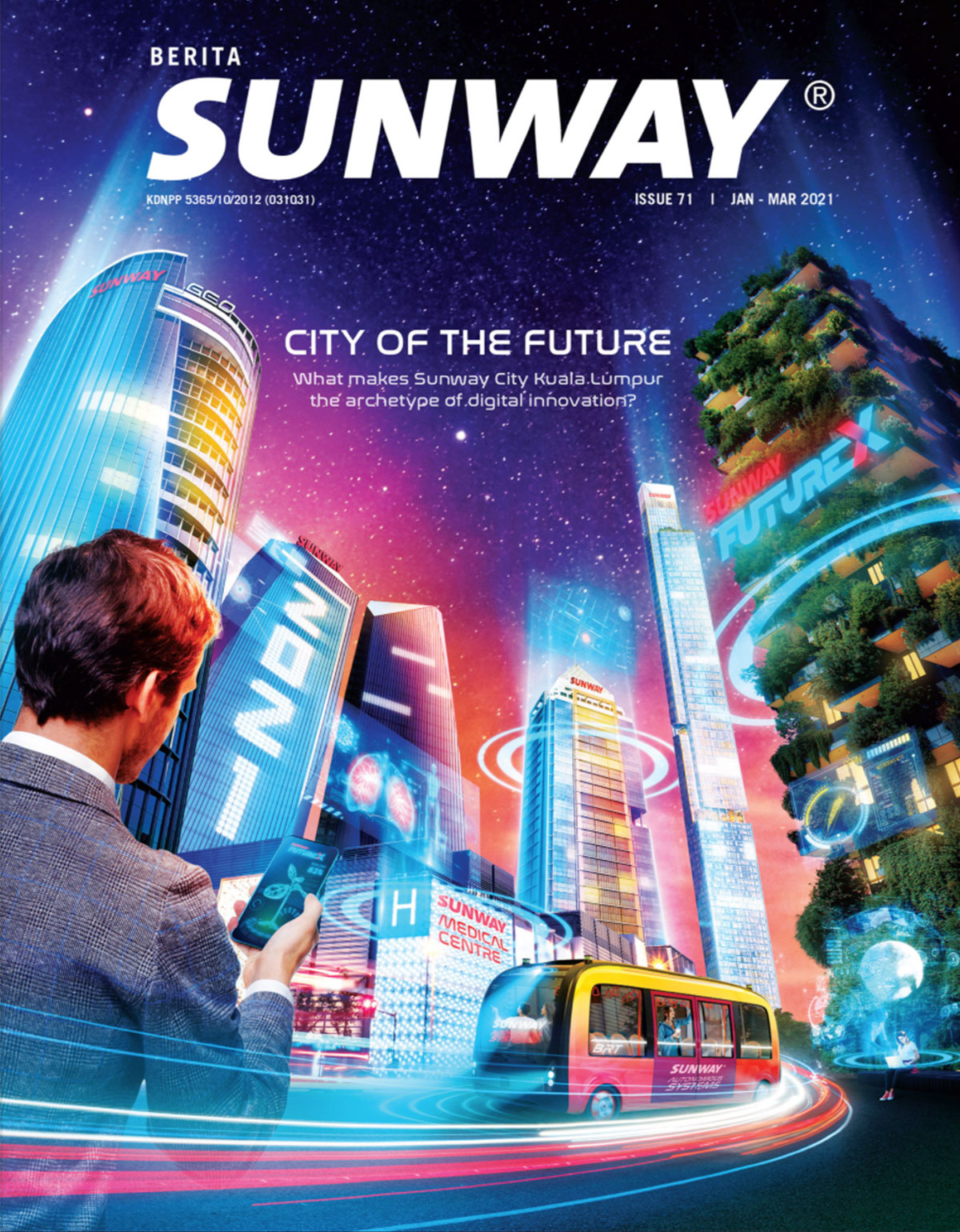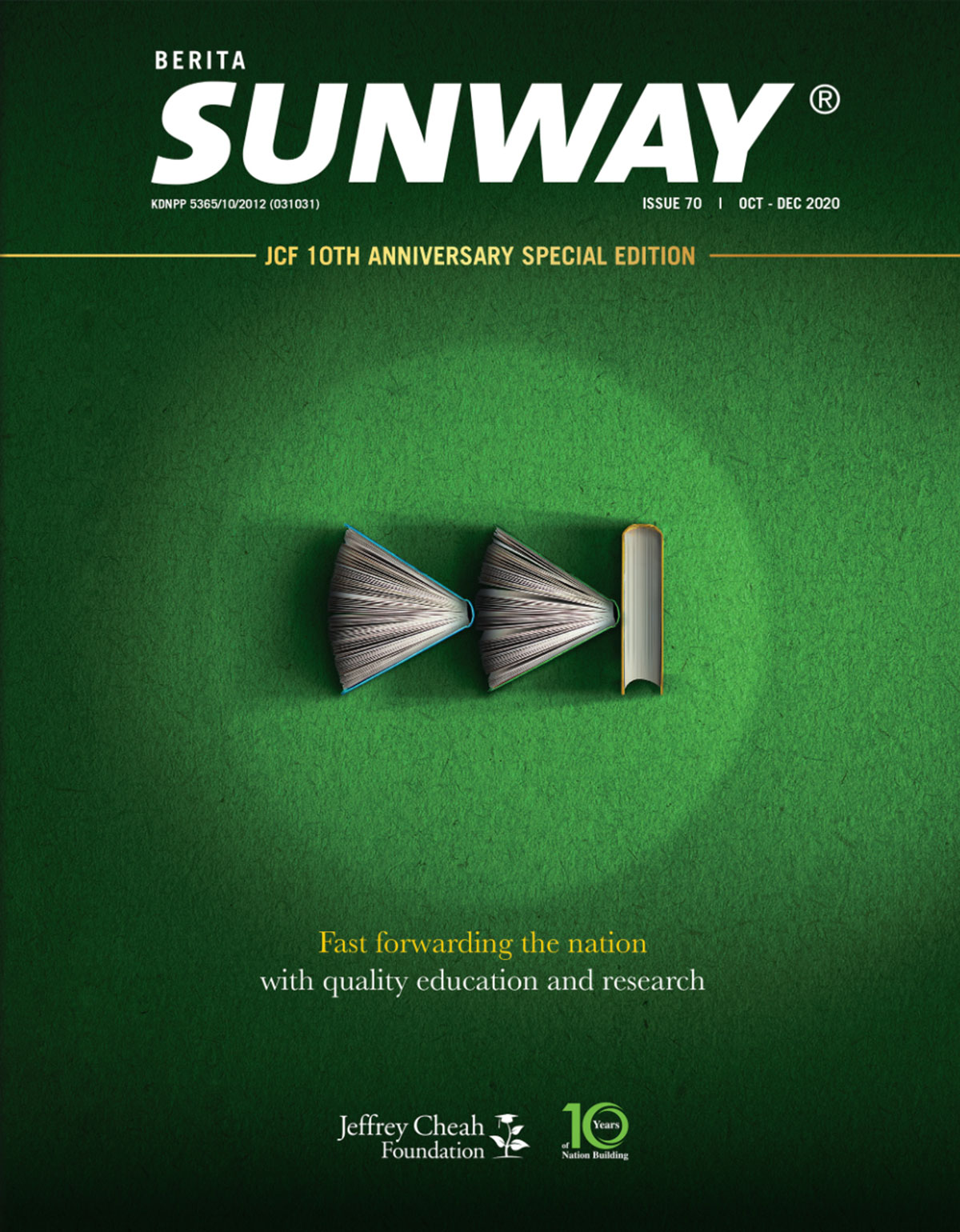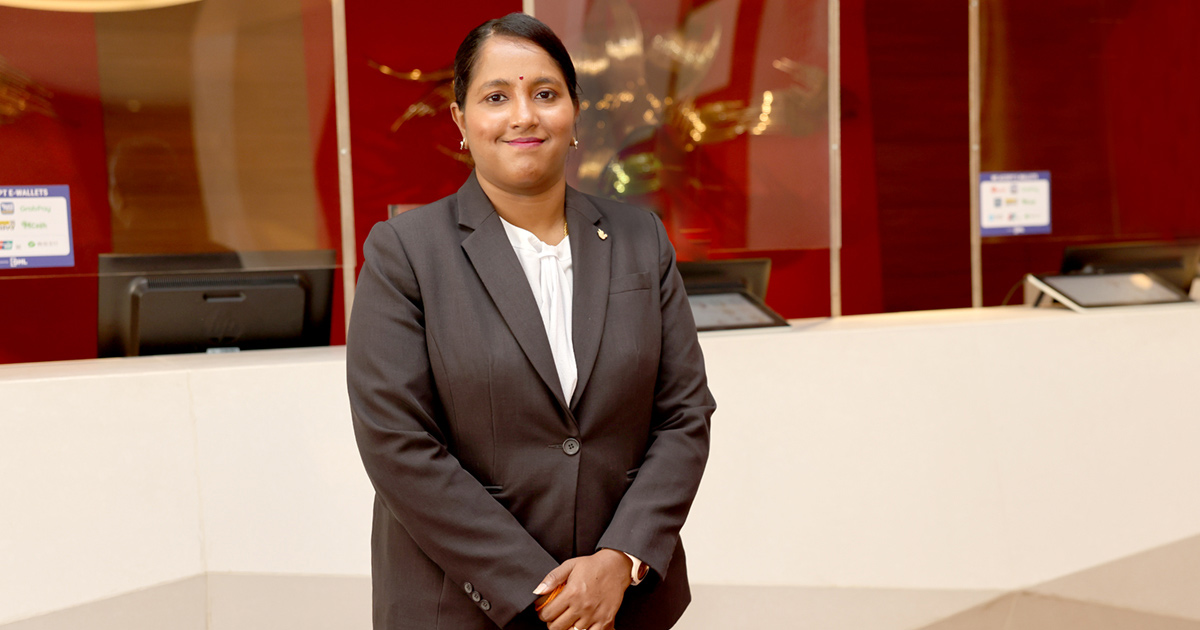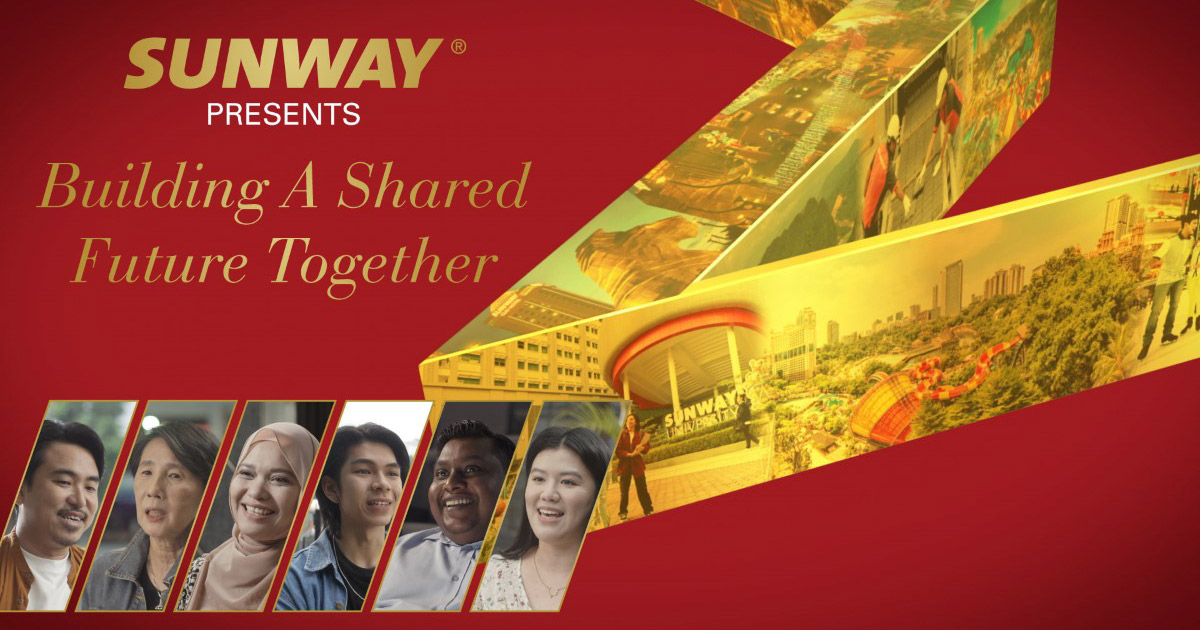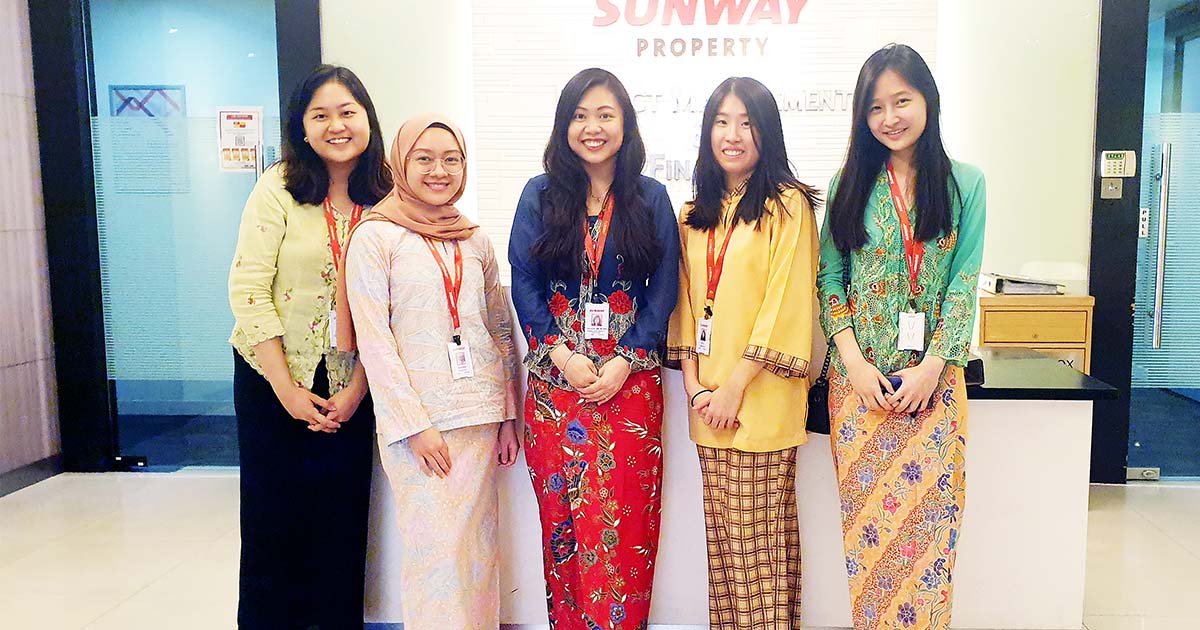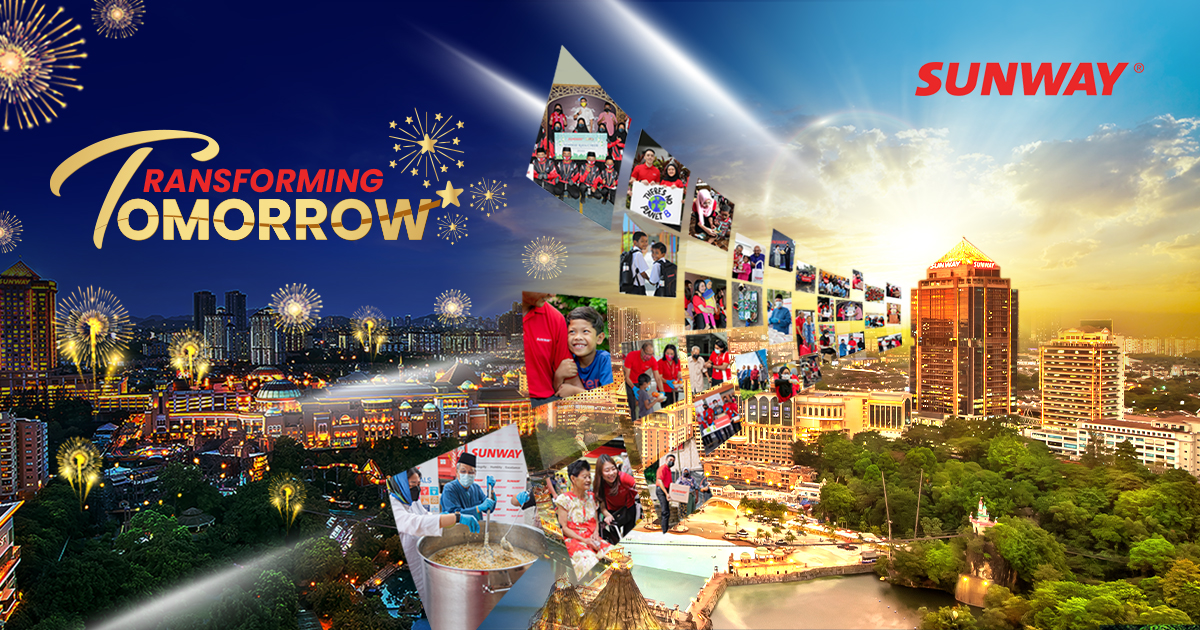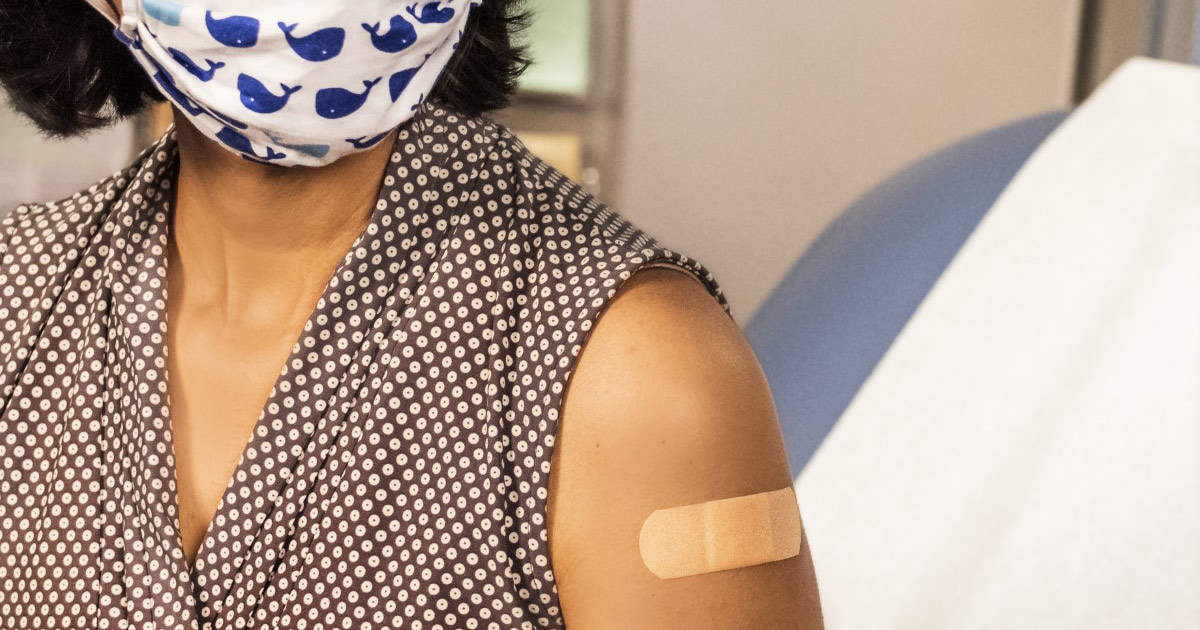Uncovering What Makes Cities Great
Commenced on September 6, Sunway iLabs at Sunway University’s annual Make It Challenge hackathon is now in its idea development stage where more than 100 participants are currently developing and validating their solutions within their teams. The programme will culminate in the Demo Day scheduled for October 6, where the top eight teams from each track will present their solutions to a panel of judges.
While the solutions are being developed, we bring you a summary of the fireside chat as a continuation of Professor Tan Sri Jemilah Mahmood’s keynote address.
The fireside chat was moderated by Disruptr Founder and Editor Poovenraj Kanaraj with the panel of experts being Sunway Centre for Planetary Health Chief Planetary Health Scientist Dr Renzo Guinto, DHL Express Malaysia Head of Business Transformation Liew Hun Ni, and Sunway Property Head of Research and Analytics Christine Chong Oelofse.
Smart Cities Aren’t About Technology, They Are About People
The fireside chat started with Dr Renzo Guinto acknowledging that there is a rising recognition that cities need to adopt new operating models because of the myriad challenges faced in cities, as well as pointing out that the end goal of smart cities shouldn’t be about the technology but for the people.
“More than 60 or even 70 per cent of the world’s population are now living in cities. So we now need to start reimagining urban living, in a way that respects planetary boundaries, so at the same time, people will be living healthy and happy lives.”
“We need to start thinking about smart cities from a much broader perspective because I think what makes cities very smart are not the 5G and the sensors but ultimately it’s about people.”
Referring to Sunway City Kuala Lumpur, which currently houses a large student population, Dr Renzo Guinto elaborated, “Sunway City Kuala Lumpur is the home of Sunway University with a lot of young people. There is an enormous concentration of intellectual capital here. You are the ones that make the city smart, not the machines, not the devices that you are using.”
Agreeing with Dr Renzo Guinto, Christine Chong Oelofse referenced Songdo International Business District in Korea as a popular case study for smart city planners which is one of the most revolutionary in terms of technology, yet was not designed for people and therefore, failed to attract a vibrant community.
Elaborating on the Songdo case study, Christine said, “The city has the best technologies in place. They have the highest concentration of LEED-certified green buildings, they have all the technology in place, they have thermostats at home, and you can control everything remotely. But the city failed in creating a vibrant community. They have a target population of 300,000 but currently, less than half the target is living there. Everything feels robotic in the city as everything is computerized.”
“It’s a technological success but there is no human warmth. Smart cities aren’t just about technology. There needs to be a multidisciplinary approach because we need to have safety and security, energy efficiency, and community creation. That approach, I think, is the ultimate thing that makes a city work.”
“Smart cities need time to scale up so you need time to evolve with the community needs, not just the technological advancements.”
Hun Ni said that while governments have aspirations to build smart cities and that it is a great starting point, there are also challenges. She forwarded that the challenges can be solved by bringing stakeholders together.
“Smart cities shouldn’t just be about the technology. It is about the people. It is about the citizens who are living there and what their needs are, but it’s also about the private sectors and the collaborations with the government. It is about health, it is about infrastructure and the environment.”
She suggested more dialogues, collaboration, and other efforts to bring stakeholders together to discuss the situation and work together to achieve results.
“If we can get people living in the city, working in the city, doing business in the city and the government of the cities to understand the dire straits that we are in, there will be a will. And when there is a will, everyone will start to come together and find solutions, but if there’s not there and everyone has their interests in mind, we will never be able to make progress.”
“When people think about smart cities, perhaps a lot of people start from the technological perspective. So perhaps you know in most people’s minds, a smart city is just where we leverage technology – it’s about digitalization, it’s about connectivity, it’s about connectedness – people do talk about the quality of life, but that doesn’t seem to be the main area of focus.”
She said that the challenge, ultimately, is to get the buy-in from everyone for people-centric development.
Leadership Is Crucial
Dr Renzo Guinto added to the conversation by saying that to advance urban transformation, a crucial ingredient is leadership.
“The most critical ingredient for success is leadership from the top, not just at the individual level but the leadership of organizations. For example, you have Sunway Group as a leader in this part of Malaysia leading that transformation. I think that’s a good thing because that creates momentum and sets a positive example to all the other neighbouring organizations and stakeholders.”
“When you are saying that you want a sustainable city, you want to be a healthy city, you want to be a digital city, you want to be a resilient city (resilient to the climate crisis and disasters) if you are the mayor, the CEO, and your organization should be setting the example and leading, others will follow. And you know once there’s positive behaviour which is seen by others, it can be as contagious as COVID.”
“Imagine – if different organisations and different companies and different government agencies are nudging each other and applying positive pressure on each other, we will be able to create the critical mass that will enable transformation.”
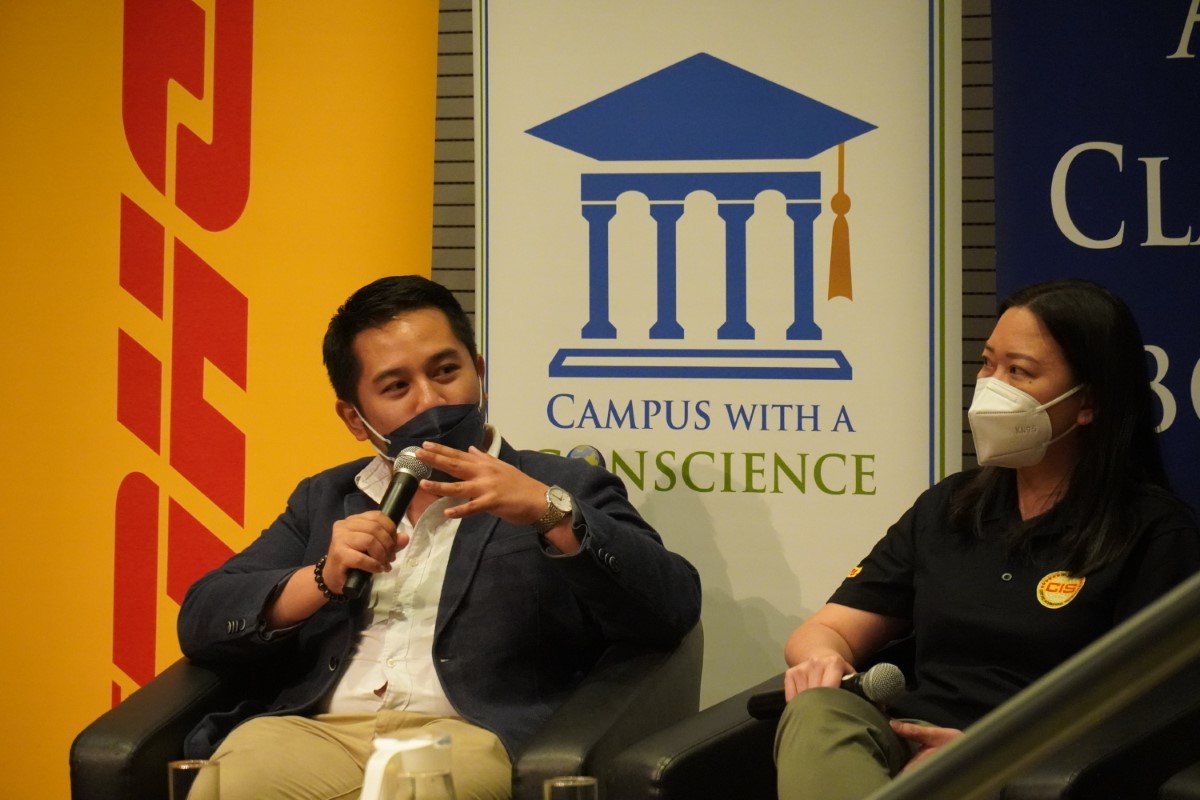
Sunway Centre for Planetary Health Chief Planetary Scientist Dr Renzo Guinto with
DHL Express Malaysia Head of Business Transformation Liew Hun Ni.
The DHL Case Study for Transformation Towards Sustainability
Hun Ni ventured into DHL’s sustainability transformation as a case study for the participants.
“DHL has almost 600,000 employees and we exist in over 220 countries and territories.”
“Our Group CEO, Dr. Frank Appel has always believed that as a corporate citizen with such influence in every corner of the world, we can make a difference. Sustainability has been at the top of our agenda and we have a goal that was publicly announced which is to achieve zero emission by 2050.”
“70% of our greenhouse gases are actually from air transport. So, we are looking at sustainable aviation fuel and one of our aims by 2030 is to have at least 30 per cent or more sustainable fuels. We are also looking at e-planes, which are electric planes capable of flying a short distance. On the ground, our goal is to have at least 60 per cent of our vehicle fleet to be electric.”
“There are challenges and we do recognize that, but taking that leadership role, and by us taking action, we hope to spur our competitors and other companies to do the same and contribute to planetary health.”
On the rising importance of ESG, Hun Ni said, “A lot of companies are starting to realise that it is crucial to be sustainable. A lot of our customers now ask us what’s your sustainability roadmap and what’s your action plan. And what it means is that more and more companies will become conscious of this and it’s a good thing.”
“Companies are realizing that if there’s going to be a movement and they are not jumping on the bandwagon, they will lose out in terms of value. Value in terms of reputation and everything.”
“If you go on Google right now, ESG is a hot topic and that’s a great thing for the world. More and more companies eventually will feel pressure to do something about it so I’m optimistic about it.”
Hun Ni explained that DHL is currently measuring their ESG data to ensure that they are on track.
“We have clocked a million miles using our e-vehicles, which represents about 20 per cent of our vehicles. We have facilities that are using green energy so about 58 per cent of all our facilities are ISO certified. We have ISO certification in either energy management or environmental management for our facilities. The CEO has made this a key objective for the Board of Management so that there is skin in the game for everyone.”
Explaining one of the key challenges for DHL, Hun Ni said, “One of the key challenges we were facing is that there are no commercial EVs in Malaysia. We have a lot of private vehicles but nobody was importing and bringing in EVs for commercial use. It took us over three years, but we have finally identified a partner and placed some orders.”
“The availability of chargers right now is the second challenge. When you have a private car and you’re driving, you have access to all the charging stations. But if you’re a business and you have courier vehicles that need to be charged, we need to build that infrastructure. We have to build chargers within our facilities for efficiency purposes.”
According to Hun Ni, DHL is currently in discussion with various stakeholders to advance the availability of chargers for commercial vehicles.
Challenges In Cities
Christine then elaborated that in a rapidly urbanising Malaysia, congestion is a major challenge for city makers.
“Congestion is a major thing. Today I came to the University and I was quite surprised because I normally leave the office at six. I left at four today and it was already congested! As I understand everyone had their drivers pick up their children from school. Traffic congestion would be a key problem.”
“Another thing is perhaps urban sprawl where the city has to grow bigger and bigger and beyond its initial boundaries but people need to go into the city or the suburbs to work. That also means that more infrastructure needs to be built, and more developments need to be built. This also causes some environmental impact if it’s not managed properly, for example, flood. New flood hotspots are emerging around the country.
“The third thing perhaps would be pollution and waste. There is still no reduction in waste. I think it’s more about habits. Malaysians are not used to the idea of reducing waste or segregating waste, unlike in other countries. That’s one fundamental thing I hope will change over time. Waste management is very critical because when there are more people, it would mean that there will be more and more waste. And if there are more people, we need more landfills. And if you don’t reduce waste, we will run out of landfills by 2050.”
“Lastly, one of the key urbanisation issues I see across cities, but not, particularly Malaysia is urban slums.”
Christine opines that everyone has a role to play in developing healthy, sustainable cities. She said, “If you ask me again how or what we can do or communities can do to stay pleasant, I think firstly, maybe each of us can try to help out a little bit by starting to utilize the public transportation system.”
“If every one of us starts walking a little bit more, riding a bicycle, or utilising public transportation, maybe we can help the planet a little bit. We could also practice waste segregation. These are just the fundamentals that each of us can do while the government, private sectors, or startups out there work on solutions that require a lot of collaboration to make cities more integrated, and more connected, then we will be on track.
What Is Your Vision of A Dream City?
The fireside chat concluded with a discussion of what each speaker’s vision of a dream city would look like.
Dr Renzo forwarded, “Young people today still want to live in cities because of the conveniences and the opportunities that they offer, but at the same time, they are hungry and thirsty for clean air, green space and more nature. So, maybe the challenge now is that the next generation of cities is how to make sure the future cities are not cities made of cement and cars but more of nature, more of greens and blues.”
“There is an opportunity for rewilding or bringing back the animals and plants that we have removed from these cities that used to be natural ecosystems. So that’s one project to lead that renaissance of health and healthy living in these urban settings. When we do, that it’s not just our physical health that improves, it’s not just our hearth that improves, because of cleaner air, and cleaner water – it’s the health of our brains and our hearts.”
“We know that stressful life in the city can also affect our mental and emotional well-being. And you know I would like to see cities being ranked not in terms of only economic productivity and progress but also inclusivity and also collective mental and emotional well-being.”
“I hope to see cities that are ranked by which are the happiest in the world because they are living not just in prosperity but also in harmony with nature and amongst each other.”
“I think at the end of the day, it’s all about preserving human dignity in the life of a rapidly urbanising planet.”
“When we talk about numbers, we often forget about the human beings behind the numbers and often in cities, we feel invisible like we’re just seen as a collection of people rather than human beings who have dignity that needs to be preserved, and human beings who have health that needs to be protected and advanced.”
“I hope that health will feature more in the urban agenda in this century and I guess planetary health. Planetary health is about the health of people and planet and I think it provides us with a very powerful framework to move this agenda forward.”
Dr Renzo added that he would like to see a doughnut city that embraces planetary health and the doughnut economy model.
“It is still very possible to live well in a city in an urban setting for everyone, not just some people. I think the issue of equity and justice is also quite important. Everyone needs to enjoy the fullest, a full life, and the highest level of health and well-being while at the same time – not breaching the planet’s boundaries, not emitting carbon that the environment cannot absorb, not destroying ecosystems to the detriment of all creatures great and small.”
Hun Ni in agreement with Dr Renzo said that her vision for a great city is where people with different needs can have them met.
“We want inclusive cities where we do something that meets the needs of everybody. I think for me a dream city would address the needs of the different parts of society.”
She added, “If you’re talking about sustainability as well, I think we have got to remember about governance and compliance as well. You want to be a city that is clean and doing the right thing. For a city to be sustainable, for a city to flourish, for a city to be attractive to investors, we’ve got to make sure that the city is based on the right values, and doing the right thing for sustainability.”
Christine shared her experience growing up in Raub, a small village in Pahang and related her personal story of why she moved to the city.
“I grew up in a very green environment as I live in the countryside but there is a lack of education, lack of good medical care, and course, that’s how I came to KL. Of course, I studied here but eventually, I returned here to work and pursued my MBA at Sunway University.”
She said that Sunway City Kuala Lumpur’s agglomeration of conveniences within walking distance was her dream for a better city.
“I bought my house in Sunway City so when my parents get old they can just go to the medical centre or they can just go downstairs to do some grocery shopping by themselves. I don’t need to worry they will get knocked down by cars if they cross the big roads.”
The article originally appeared in Head’s Up




